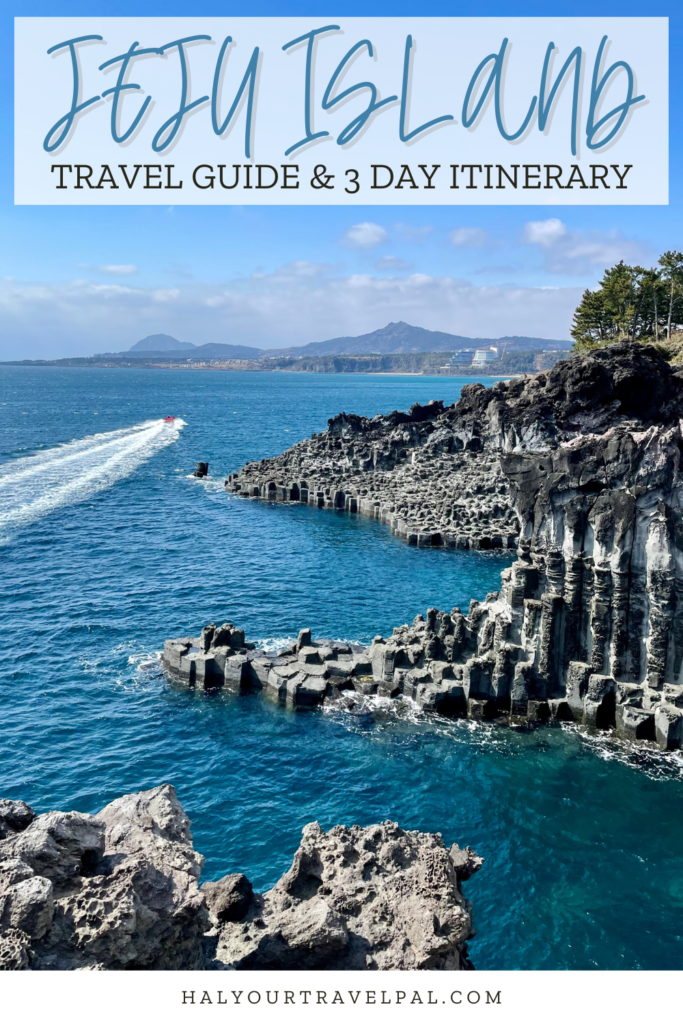
This post may contain affiliate links and I may earn a small commission when you click on the links at no additional cost to you. You can read my full privacy policy here.
Imagine a tropical paradise, full of stunning landscapes, snow-capped mountains, and tropical beaches, located less than an hour from mainland Korea. 50 miles off of the southern coast of South Korea lies a small volcanic island known for its natural wonders. Jeju is one of the New 7 Wonders of Nature and is home to 3 UNESCO World Heritage Sites. It boasts the best beaches and the highest mountain in Korea, along with its own side of Korean culture. Most first-time visitors to Korea skip Jeju Island, but it is well worth the short flight. This 3-day Jeju itinerary & travel guide will prepare you for a successful visit to a nature lover’s paradise.

Jeju Itinerary: FAQs
How can I get to Jeju Island?
Jeju Island is less than a 1-hour flight from mainland Korea, with flights regularly leaving Gimpo International Airport in Seoul and Gimhae International Airport in Busan. Flights are generally cheap (between $50-$100), although prices can go up if you’re traveling on a weekend or holiday. Make sure to bring your passport with you because you will have to go through immigration, despite not technically leaving Korea.

How can I get around Jeju Island?
Unfortunately, Jeju is an exception to Korea’s fantastic public transportation system. Although there are buses and taxis available around the island, it is much easier and faster to rent a car for this Jeju itinerary. These buses have limited routes and come infrequently. You won’t want to waste any of your precious time waiting around for them! So come with an International Driving Permit (IDP), easily obtained from your local AAA office for $20, and rent a car for full flexibility. You can’t rent a car in Korea as a US citizen if you don’t have an IDP. Find an affordable, reliable rental car here.
If you don’t want to drive, you can base yourself in Jeju City near the airport and take guided day trips from there. Keep reading for recommendations on the best day trips.
This Jeju Island travel guide works best with a rental car, but I have some great guided tour suggestions for those who don’t have a car.
If I have a car, how can I navigate around Jeju?
An important thing to know when traveling to Korea is that Google Maps does not work in Korea. It’s censored due to the country’s laws, so looking up driving directions on Google Maps will do you no good. That’s where Naver Map and KakaoMap come in. Both of these Korean navigation apps are accurate and reliable for getting you to your destination. They provide driving, walking, and public transportation options all across Korea.
People tend to have their preferences about which interface they prefer (I’m a Naver Map girl), but both apps achieve the same goal by being reliable, accurate, and English-friendly (although both aren’t 100% in English). It’s wise to download both apps before you go to Korea so you can experiment with which interface works best for you. I’ve found KakaoMap to be more English-friendly, so it’s always good to have both options in your back pocket.
Need to know what other apps you should download to make your time in Jeju easier? Read my guide to essential apps for Korea travel.
Where should I stay on Jeju Island?
Where you should stay depends on whether you’ll have a car or not. If you don’t have a car, you should stay in Jeju City near Jeju International Airport. Jeju City is the largest city in Jeju, offering lots of restaurants and shopping. Most day tours depart from the airport, making it easy to join in. It also relieves you of the stress of having to find transportation to your hotel, because it’s very easy to find a bus or taxi to take you from the airport to a Jeju City hotel.
If you have a car, you should stay in downtown Seogwipo, Jeju’s second-largest city. It’s in the south of the island with some stunning scenery and natural wonders nearby. It’s not as big of a city as Jeju City, but it offers volcanic cliffs, popular beaches, and majestic waterfalls. It also works perfectly as a base point for driving yourself around the island, as suggested by this Jeju itinerary.
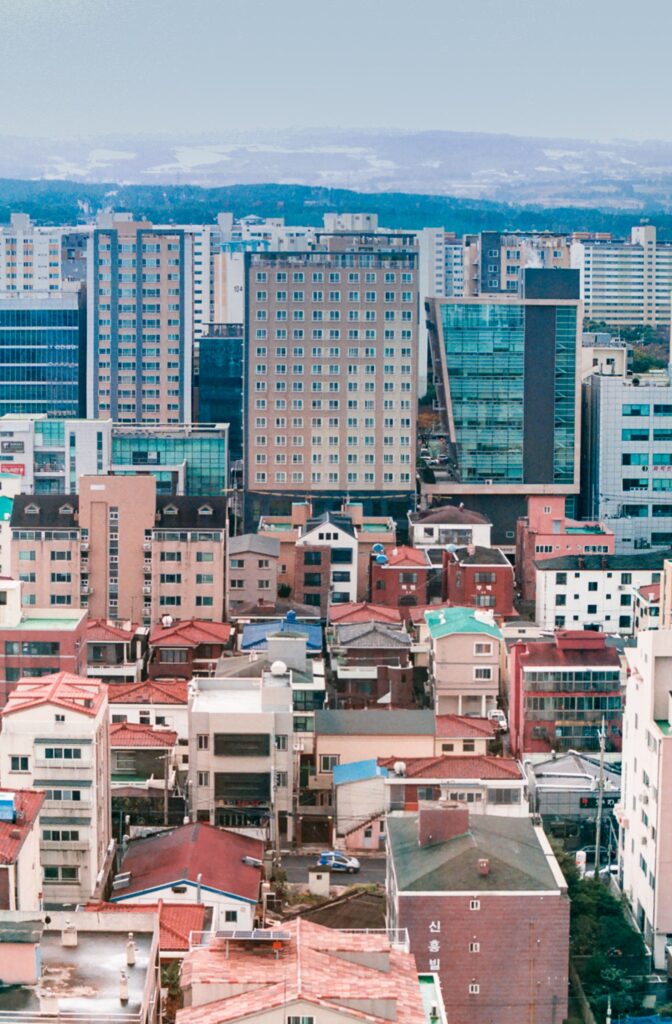
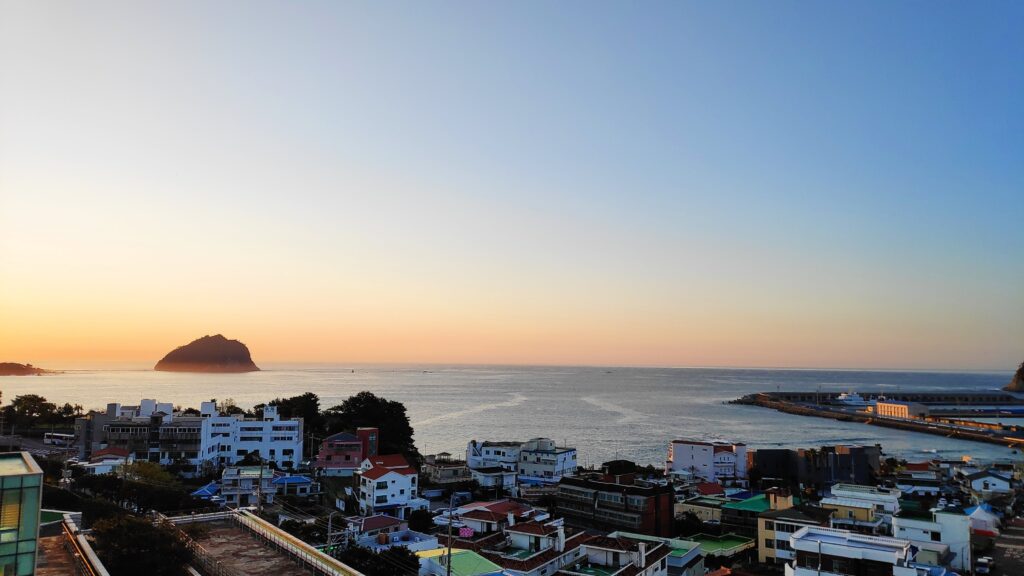
How to book the best hotels in Jeju?
The best booking platform for finding and reserving great hotels in South Korea is Agoda. It’s owned by the same company as Booking.com but is based in Southeast Asia, making it great for finding any hotels you need. If you’re a backpacker staying in hostels, then Hostelworld is consistently the best hostel booking platform worldwide, and Korea is no exception. Book your Jeju accommodations on Agoda today:
How to book the best activities and excursions in Jeju?
The best activity and excursion booking platforms for South Korea are Klook and GetYourGuide. Both websites have thousands of trustworthy travel experiences with verified user reviews. I use Klook and GetYourGuide to book almost all my excursions in Asia, and you’ll find links throughout the article to great experiences I’ve personally vetted or experienced myself.
When should I visit Jeju Island?
The weather on Jeju Island follows similar patterns to the weather on mainland Korea, but it’s not the same. From July to September, Jeju has its rainy season. However, large amounts of rain can come in any season, so you shouldn’t be discouraged if you’re traveling in the rainy season.
Jeju also has milder winters and summers than mainland Korea. In the winter, the weather typically alternates between cold and mild periods. It’s rainier in the winter than the mainland and has strong winds, which can make it feel colder than it is. In the summer, it’s humid and hot, but the sea breeze helps relieve the heat.
Jeju can be a great destination year-round if you’re prepared for the forecast. For the mildest temperatures and least rainfall, the best time to visit is in the spring or fall, from April – June and September – October.
Is Jeju Island safe for solo female travelers?
Yes, just like the rest of Korea, Jeju Island has very little crime and you should feel safe everywhere you go. You should always practice standard safety precautions, but Jeju is a welcoming destination for solo female travelers.
Keep in mind that traveling in Jeju solo might pose extra challenges compared to mainland Korea due to less reliable and frequent public transportation. As a solo female traveler, I highly recommend joining guided day trips instead of trying to do it on your own. Keep reading for recommendations on the best day trips.

3 Day Jeju Itinerary
This Jeju itinerary works best with a rental car, but I have some great guided tour suggestions for those who don’t have a car. Either way, you’ll get to see Jeju’s top sights as you make your way around the island. If you don’t have a car, you can switch around the order of the days however you’d like, keeping in mind tour availability. If you have a car, I highly suggest following this exact order for efficiency, or else a lot of backtracking will be involved.
Day 1: West Coast
With a car
Summed up: Jeju City → Hyeopjae Beach → Osulloc Tea Museum → Camellia Hill Botanical Garden → Yongmeori Beach → Seogwipo
Start your Jeju adventure by driving around the west coast of Jeju Island. After leaving Jeju City, your first stop is Hyeopjae Beach. This stunning beach is known for its turquoise water and views of Biyangdo Island. Be sure to stop at Hotel Sand, a beach-front cafe where you can eat delicious pastries and take in the views.
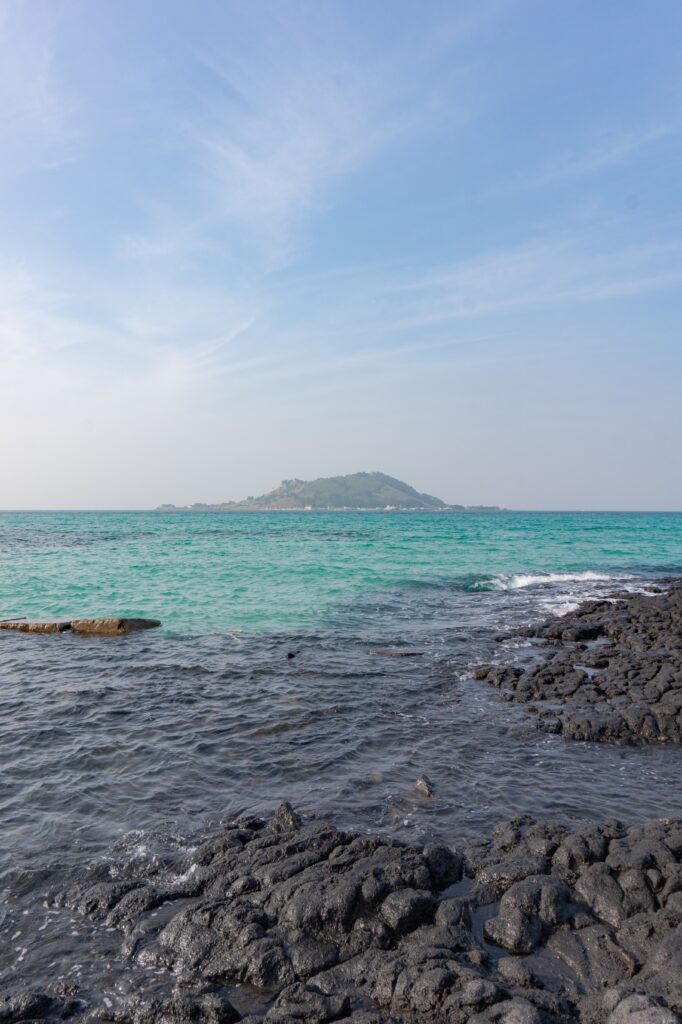
Next, head to Osulloc Tea Museum where you can learn about green tea, walk in a green tea field, and try unique green tea desserts and drinks.
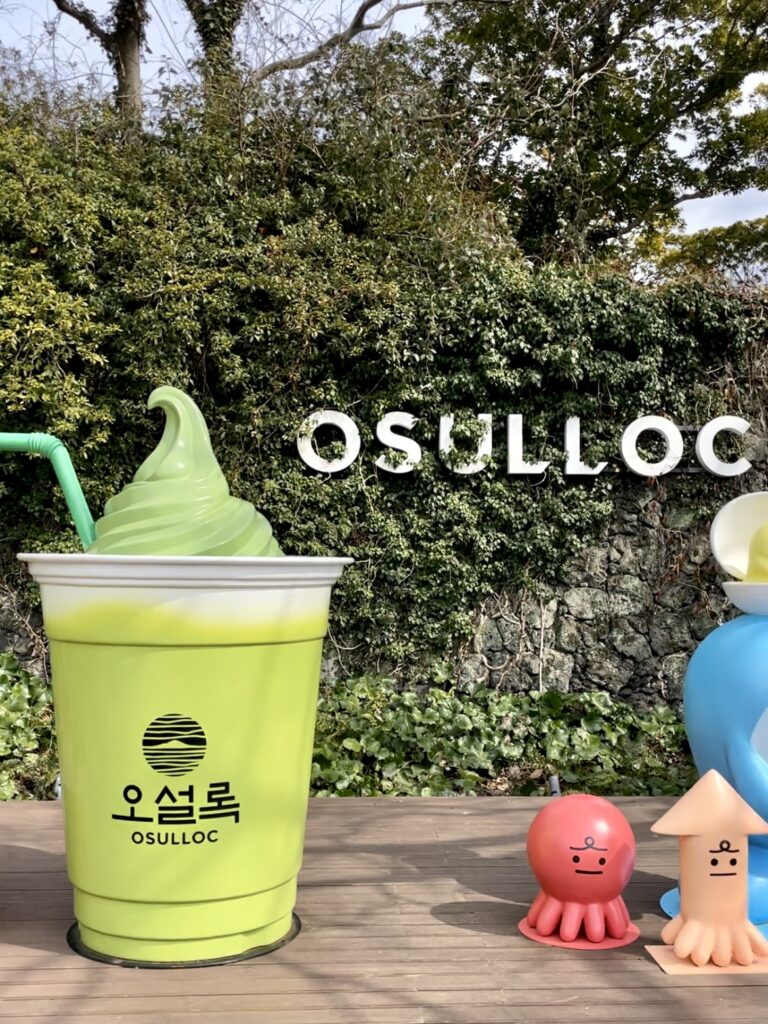

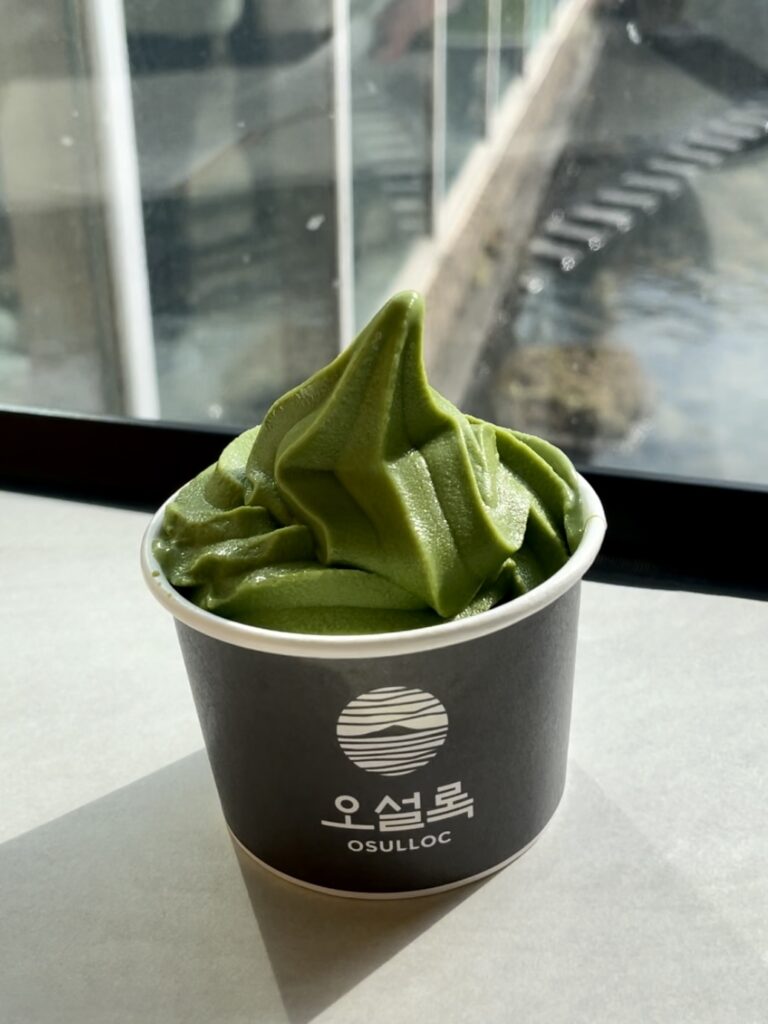
After you’ve indulged in lots of green tea creations, head to Camellia Hill. This year-round botanical garden is known for its 500 species of camellia. They start to bloom in autumn and stay out until spring, with winter being the peak time to see them. However, don’t worry if you aren’t visiting during camellia season. The botanical garden turns green with colorful hydrangeas blooming in the summer. In the fall, you’ll get gorgeous colorful trees, and in the spring, you can see cherry blossoms and tulips.


Your final stop for the day is Yongmeori Beach, a rocky coastline with unique cliff formations and scenic ocean views. It’s famous for its view of Sanbangsan Mountain, which stretches into the ocean looking like a dragon’s head going underwater. The walking path takes about an hour in its entirety. Keep in mind that it closes at 5 p.m. every day, so it’s important to get an early start on today’s adventures.
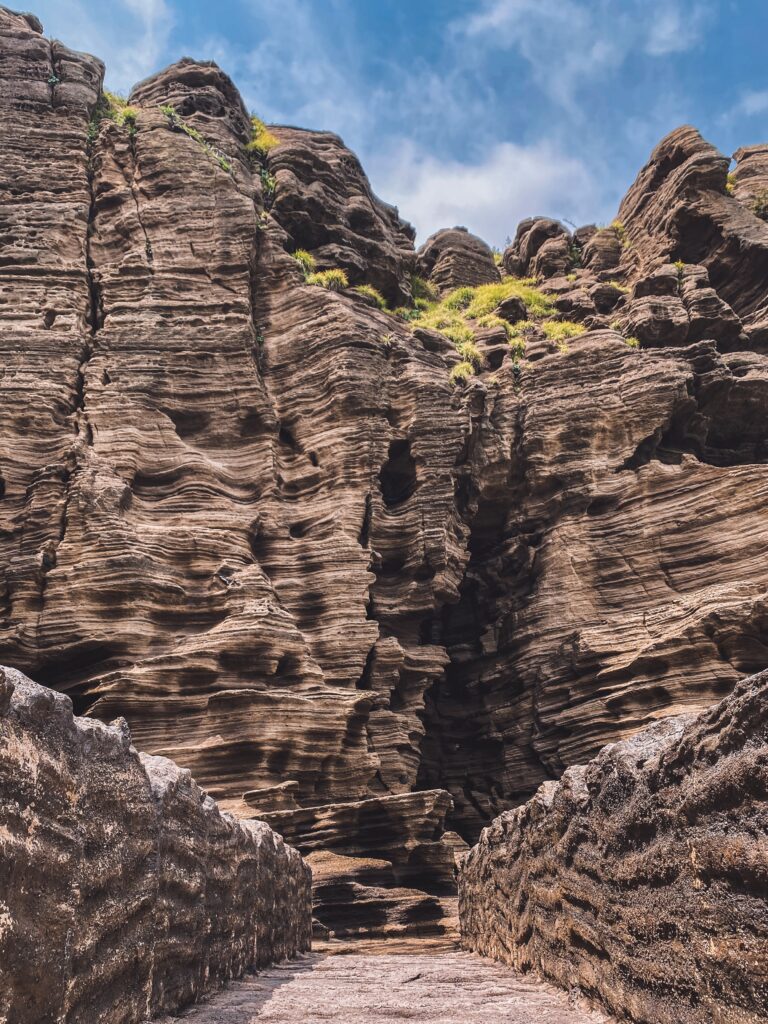
Next to Yongmeori Beach is my favorite cafe in Jeju, One and Only! This huge cafe has outdoor seating surrounded by palm trees and set against a beach. It also has stunning views of Sanbangsan Mountain. Wind down after a long day while taking in the beach and mountain views at this amazing cafe.
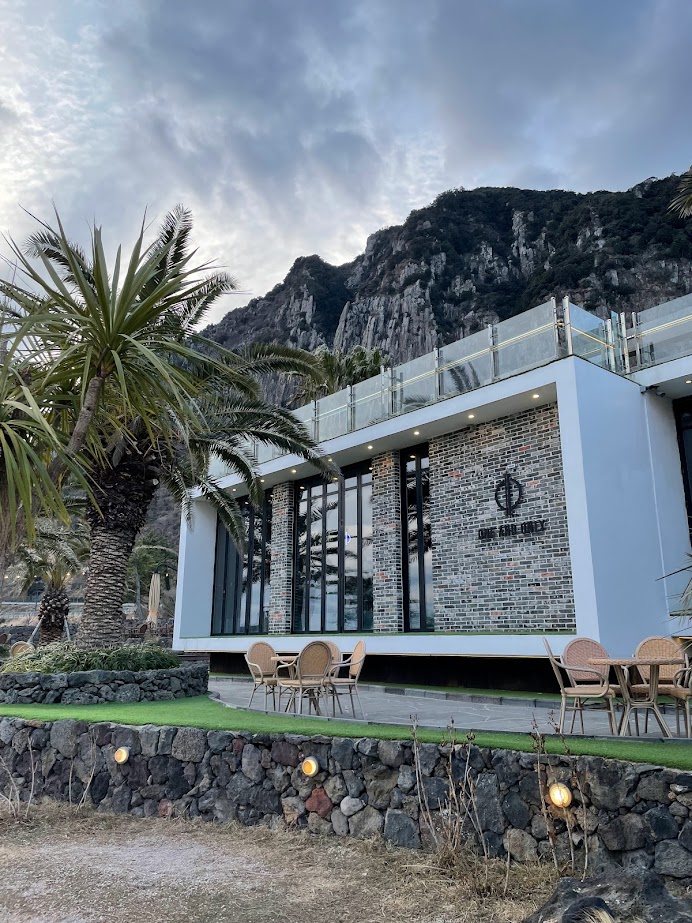

Finally, it’s time to head to your hotel in downtown Seogwipo and turn in for the night.
Without a car
Take this guided tour of the west coast, which stops at Hyeopjae Beach, Hallim Park, Osulloc Tea Museum, Songaksan Mountain, Cheonjeyeon Falls, and the Teddy Bear Museum. It includes pickup at Jeju Airport and dropoff at Jeju City hotels. It also includes lunch, with a vegetarian option available. Currently, the tour takes place on Mondays, Wednesdays, and Fridays, so keep that in mind when planning.
Ready to plan the ultimate Jeju adventure?
Jeju is so different than mainland Korea and requires a different planning approach. I help travelers design custom itineraries that showcase the best of the island’s nature, food, and hidden gems. I lived in Korea for 3 years, so you can trust my insider knowledge to create a seamless, unforgettable trip that matches your travel style.
Let’s start planning your custom Jeju Island adventure today!
Day 2: South Coast
With a car
Summed up: Cheonjiyeon Falls → Jeongbang Falls → Hallasan volcanic cone hike → Cheonjeyeon Falls → Daepo Jusangjeolli Cliff → Teddy Bear Museum → The Cliff
Today, you’ll spend the day on the southern coast of Jeju. Start the morning at Cheonjiyeon Falls, a beautiful waterfall surrounded by a lush forest and ponds. Then, drive to Jeongbang Falls, the only waterfall in Asia that falls directly into the ocean.

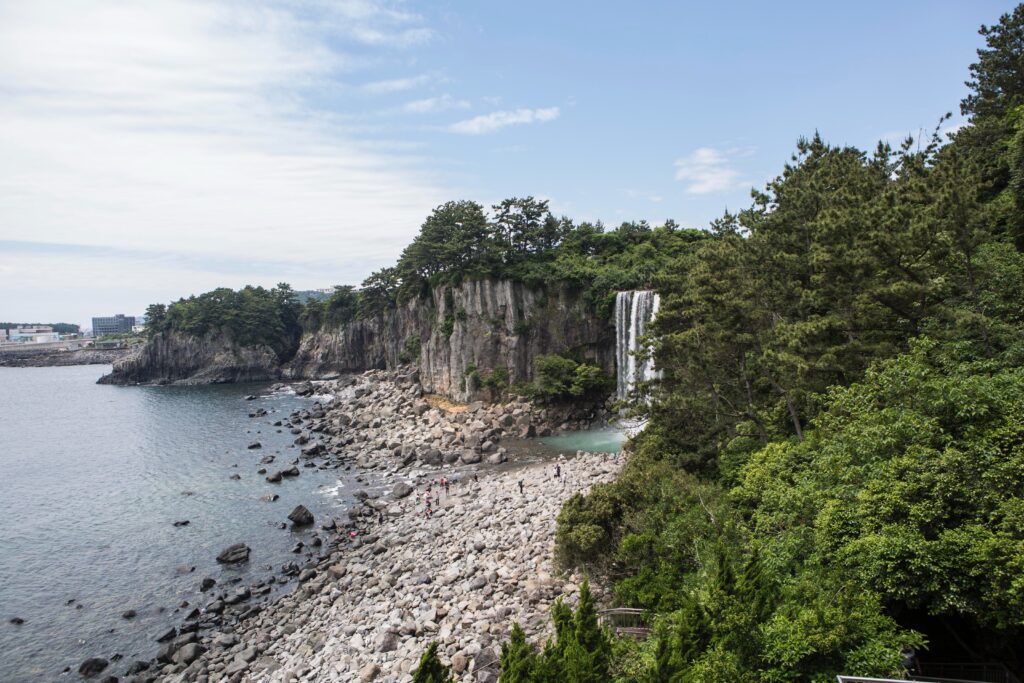
Next, you’ll do a short hike of a volcanic cone next to Hallasan Mountain. Hallasan is the largest mountain in Korea and hiking it takes an entire day, so hiking a volcanic cone is a good way to get great views without the lengthy journey. Eoseungsaengak Trail is a great option, as it’s short and provides great views of Hallasan and Jeju City at the summit.


After the hike, you’ll head southwest to Jungmun Tourist Complex, where the rest of today’s sights are. First, stop at Cheonjeyeon Falls, a 3-tier waterfall surrounded by greenery. Get ready to walk up and down lots of stairs to explore all 3 tiers.
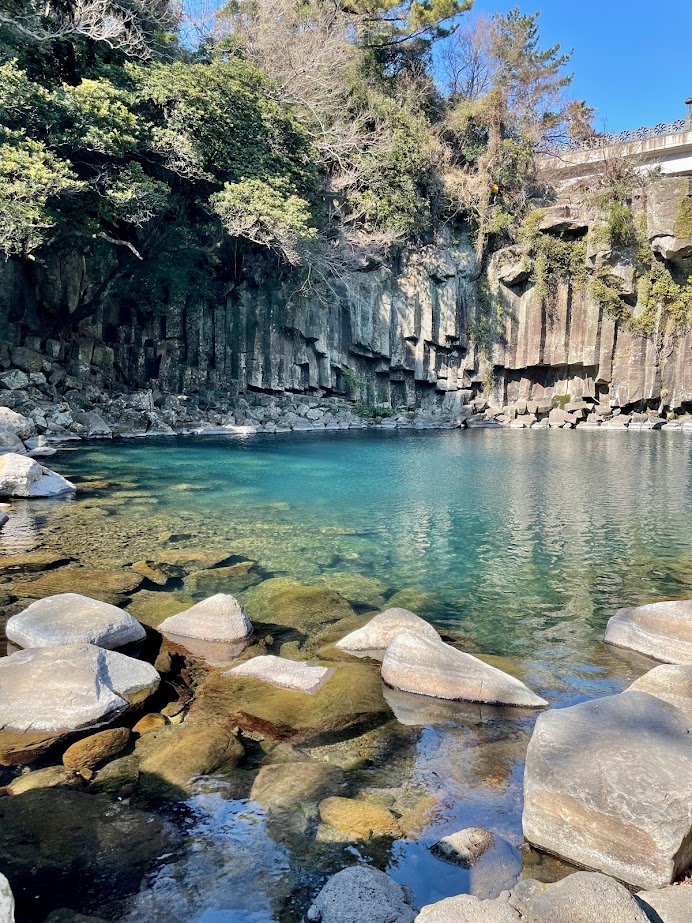

Daepo Jusangjeolli Cliff is next, a rugged cliff formed by volcanic pillars. This is a designated national monument, so be sure not to miss it.


Your next stop is the Teddy Bear Museum, a museum dedicated solely to teddy bears. You’ll find that Jeju is home to some strange museums, and it’s worth stopping at one (and one only) during your trip. The Teddy Bear Museum is my top recommendation for a unique, funny afternoon activity. If it doesn’t sound interesting to you, you can skip it.


Next door to the Teddy Bear Museum is an iconic Starbucks where you can take a coffee break. The exterior features a rainbow staircase and steampunk building, and inside there are “Jeju-only” menu items worth trying.

The last stop of the day is The Cliff, a restaurant and bar on the coast with stunning views. I recommend getting food and drinks here while watching the sunset. Then head back to your downtown Seogwipo hotel for the night.

Without a car
Take this guided tour of the south coast, which stops at the Eoseungsaengak Trail at Hallasan, the Alive Museum, Daepo Jusangjeolli Cliff, Lonely Rock, and Jeongbang Falls. It includes pickup at Jeju Airport and dropoff at Jeju City hotels. It also includes lunch, with a vegetarian option available. Currently, the tour only takes place on Sundays, so keep that in mind when planning.
Day 3: East Coast
With a car
Summed up: Seongsan Ichulbong → Manjanggul Cave → Hamdeok Beach → Jeju City
Your last full day will take you around the east coast of Jeju Island. Get an early start and head to Seongsan Ichulbong, an archetypal tuff cone that you can choose to climb or walk around the base. It takes about 20 minutes to hike to the summit, but keep in mind that it’s all stairs. At the summit, you’ll be rewarded with views of Udo Island, the inside of the cone, and the city in the distance. This is said to be the best place to watch the sunrise in Jeju, so if you make it early enough, you can watch a stunning sunrise.
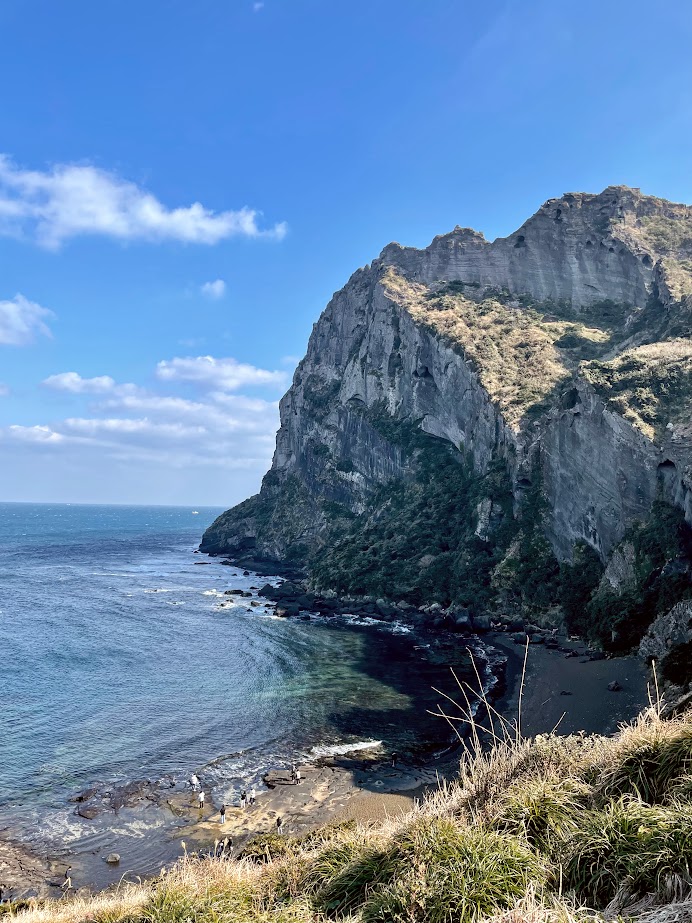
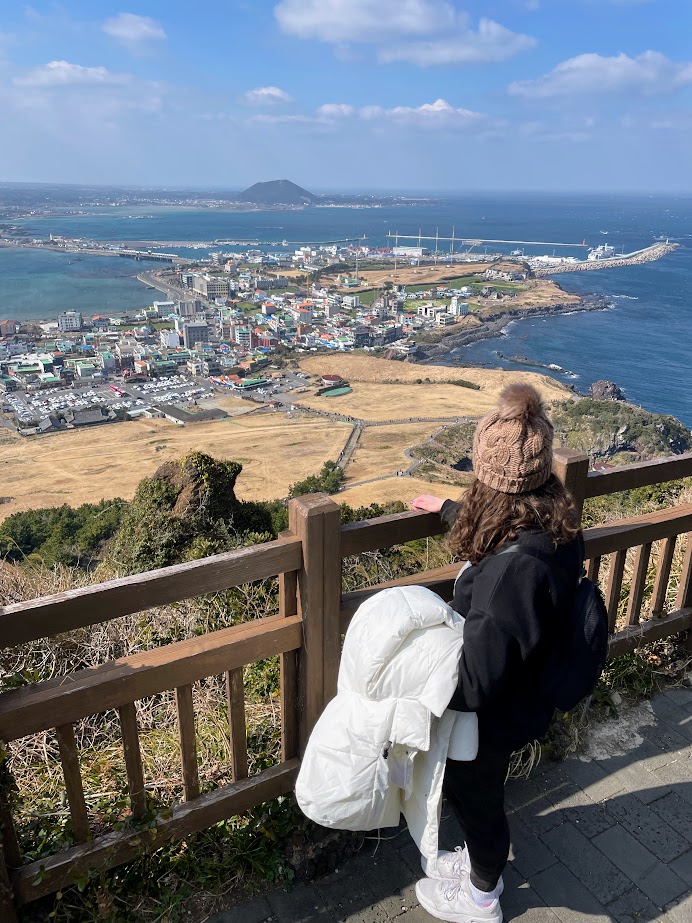
Jeju is famous for its women divers, called Haenyeo. These women spend their lives diving as deep as 30 feet to collect shellfish. The best place to see the Haenyeo in action is at the base of Seongsan Ichulbong, where they hold women diver shows at 1:30 and 3:00 p.m. every day.
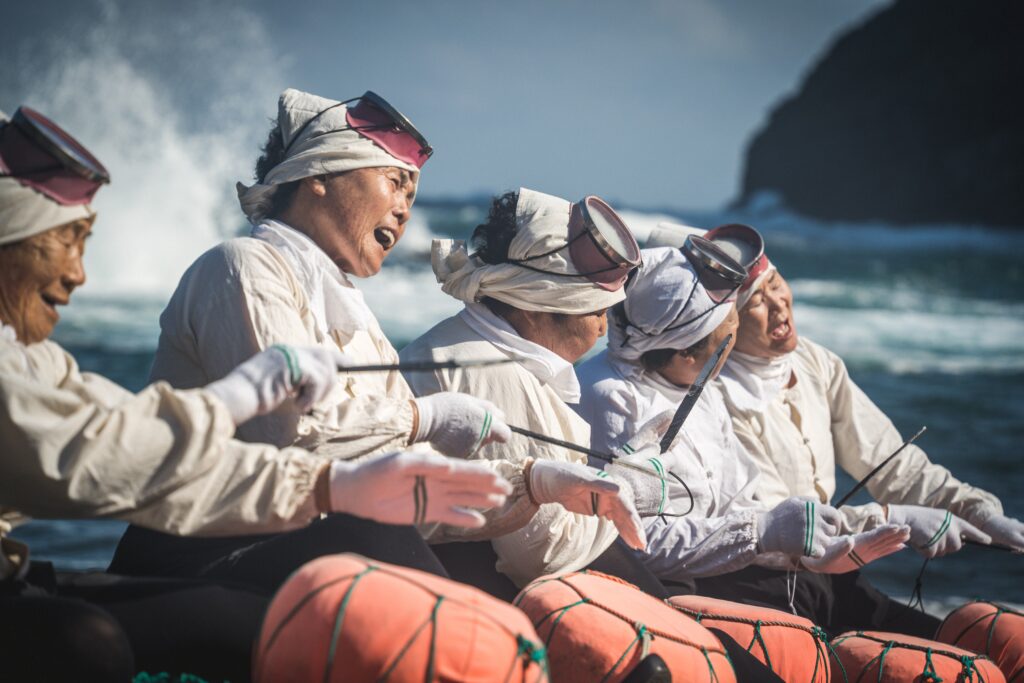
The next stop is Manjanggul Cave, the 12th longest lava tunnel in the world and one of the largest. As you walk through the cave, you’ll see many interesting lava structures, including one of the biggest lava stalagmites in the world.

Your final stop before going back to Jeju City is Hamdeok Beach, my favorite beach in all of Korea. This beach is famous for its tall palm trees, emerald waters, and white sand. Because of the long sand bar, this is a great place to wade around in the water or even go swimming. I recommend a stop at Cafe Delmoondo, which is located directly on the beach with great views. You can grab dinner at an oceanfront restaurant before wrapping up your last full day in Jeju.

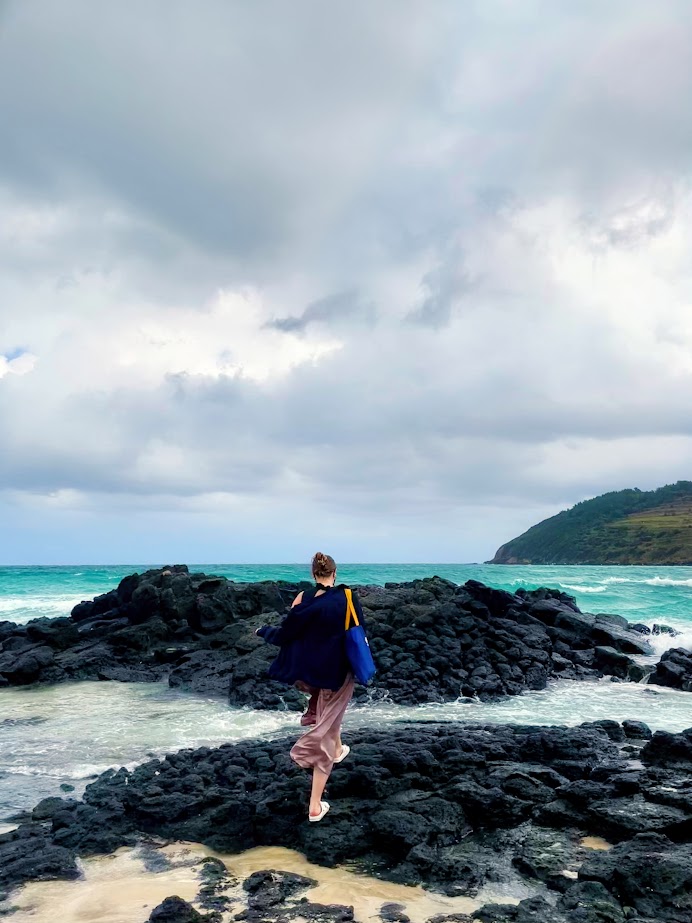
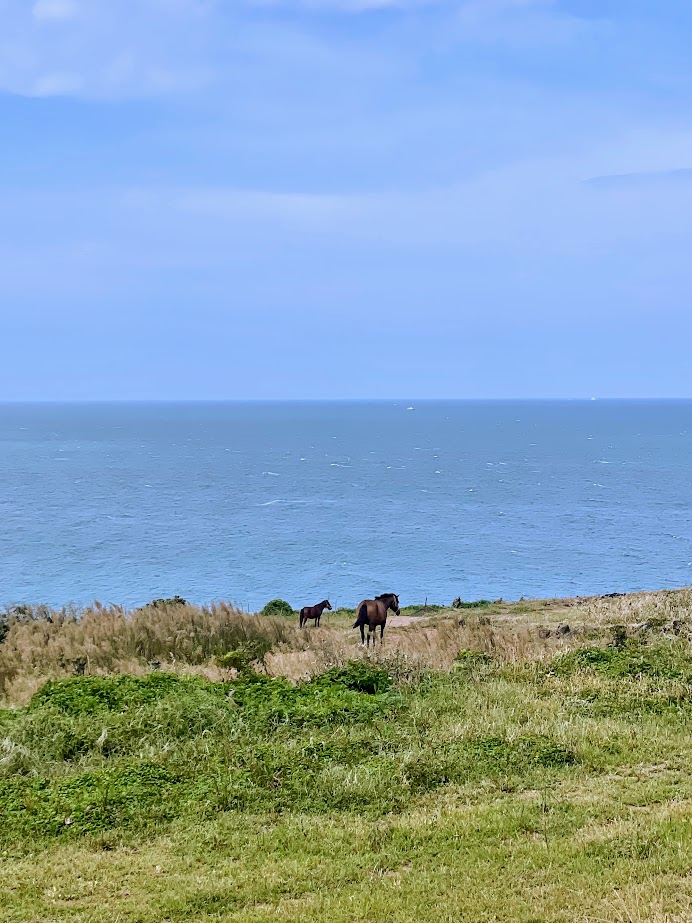
After your time at Hamdeok Beach, it’s time to drive back to Jeju City and prepare for your departure flight.
Without a car
Take this guided tour of the east coast, which stops at Jeolmul Forest, Seongeup Folk Village, Gwangchigi Beach, Seongsan Ilchulbong, the women diver show, and Manjanggul Cave. It includes pickup at Jeju Airport and dropoff at Jeju City hotels. It also includes lunch, with a vegetarian option available. Currently, the tour takes place on Tuesdays, Thursdays, and Saturdays, so keep that in mind when planning.
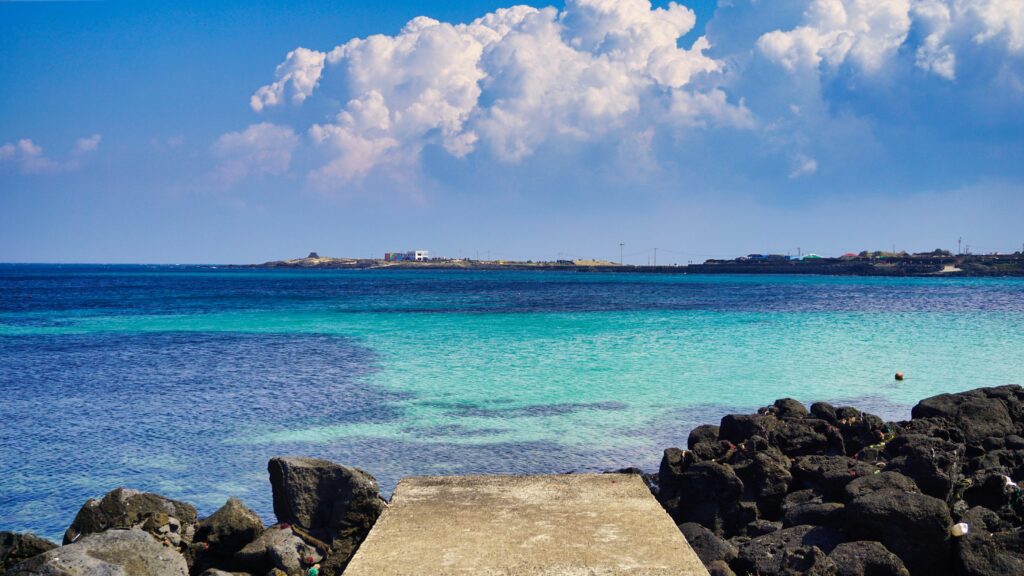
With 3 days and a busy schedule, you can see the highlights of this tropical paradise with this Jeju itinerary. Jeju is very different from mainland Korea, from its dialect to its food to its topography, making it well worth the short flight. With all that it has to offer that is so different from anything else you’ll see in Korea, Jeju is the perfect place to include in your South Korea itinerary.
Keep reading:
- 2 week South Korea itinerary & travel guide from a local
- South Korea Solo Travel Guide: Safety, tips, & what to expect
- 20 best things to do in Seoul, South Korea
- Seoul itinerary: Local’s guide to 1 week or less
- 15 unique things to do in Seoul: An unreplicable bucket list
- Where to stay in Seoul, South Korea: A local’s guide
- 15 BEST day trips from Seoul
- 16 best things to do in Busan, South Korea
- Busan itinerary: 2, 3, or 4 days in South Korea’s coastal gem
- 10 best day trips from Busan
- What to know before going to South Korea: 33 tips from a local
- Vegetarian in Korea: The ultimate survival guide
- South Korea packing list: A local’s guide to what to pack
- 31 unmissable things to do in spring in Korea
- 22 best things to do in summer in Korea
- Fall in Korea: The 26 best things to do
- 25 unmissable things to do in Korea in winter

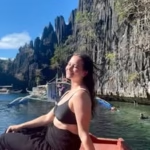


Leave a Reply